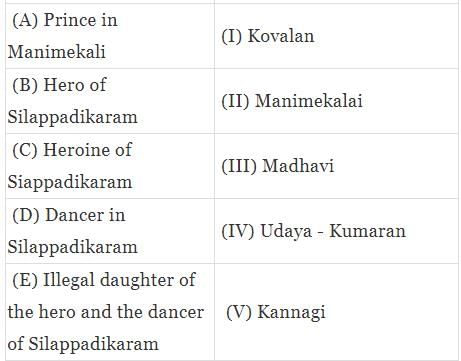Test: The Sangam Age - 1 - UPSC MCQ
20 Questions MCQ Test - Test: The Sangam Age - 1
What was the script used in the earliest Tamil inscriptions?
| 1 Crore+ students have signed up on EduRev. Have you? Download the App |
The external trade of the Sangam people was carried on mainly with the
Consider the following statements regarding the Sangam age.
It is noticeable for
I. The use of iron
II. Its association with megaliths.
III. The use of black and red ware
IV. The penetration of Mauryan influence into South India
The earliest Tamil literature is termed as Sangam literature, because it was
Which one of the following statements regarding Sangam age is NOT correct?
What is the name of the Chola king who defeated the Pandya and Chera kings in the famous battle of Venni?
Which one of the following statements on the Cholas is NOT correct?
Which one of the following statements on the Cheras is NOT correct?
Which one of the following statements on the social life in the Sangam era is NOT correct?
Which one of the following statements on Sangam literature is NOT correct?
Which one of the following statements regarding Sangam age is NOT correct?
Which one of the following statements on the Sangam literature is NOT correct?
Which of the following works of the Sangam age is considered to be the greatest literary works of ancient Tamil literature?
Which of the following statements about the manram, the Sabha of this period, is NOT correct?


















